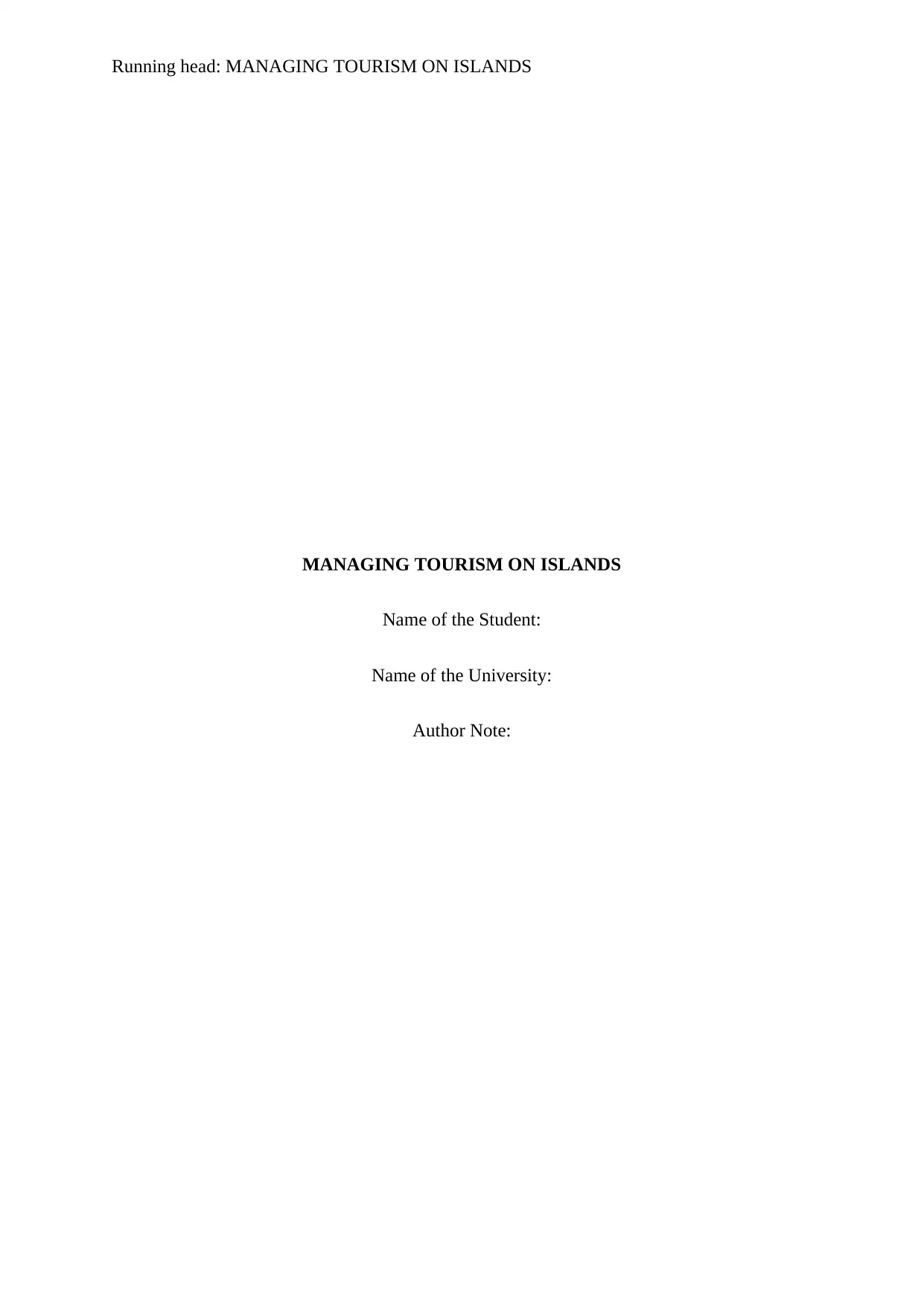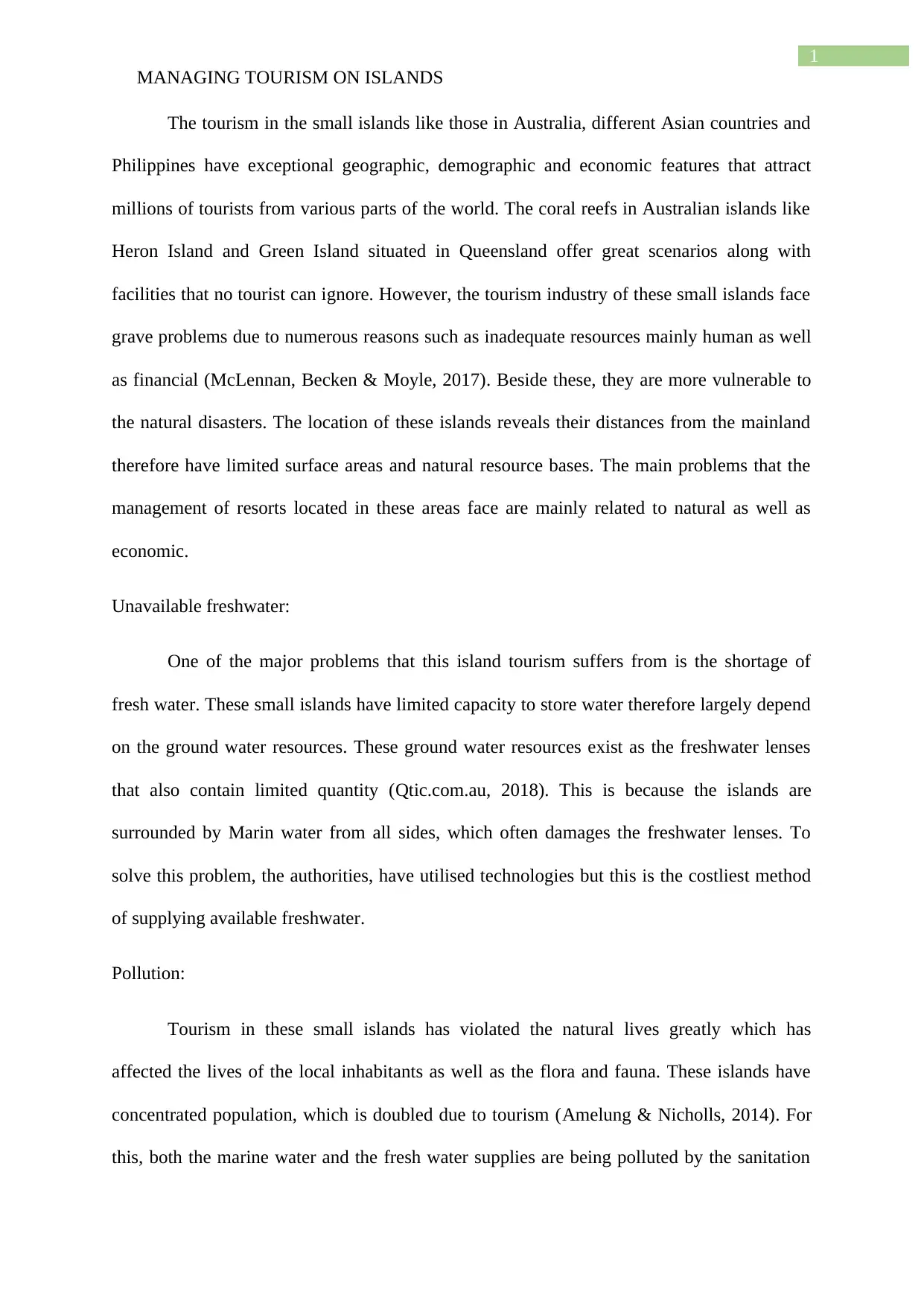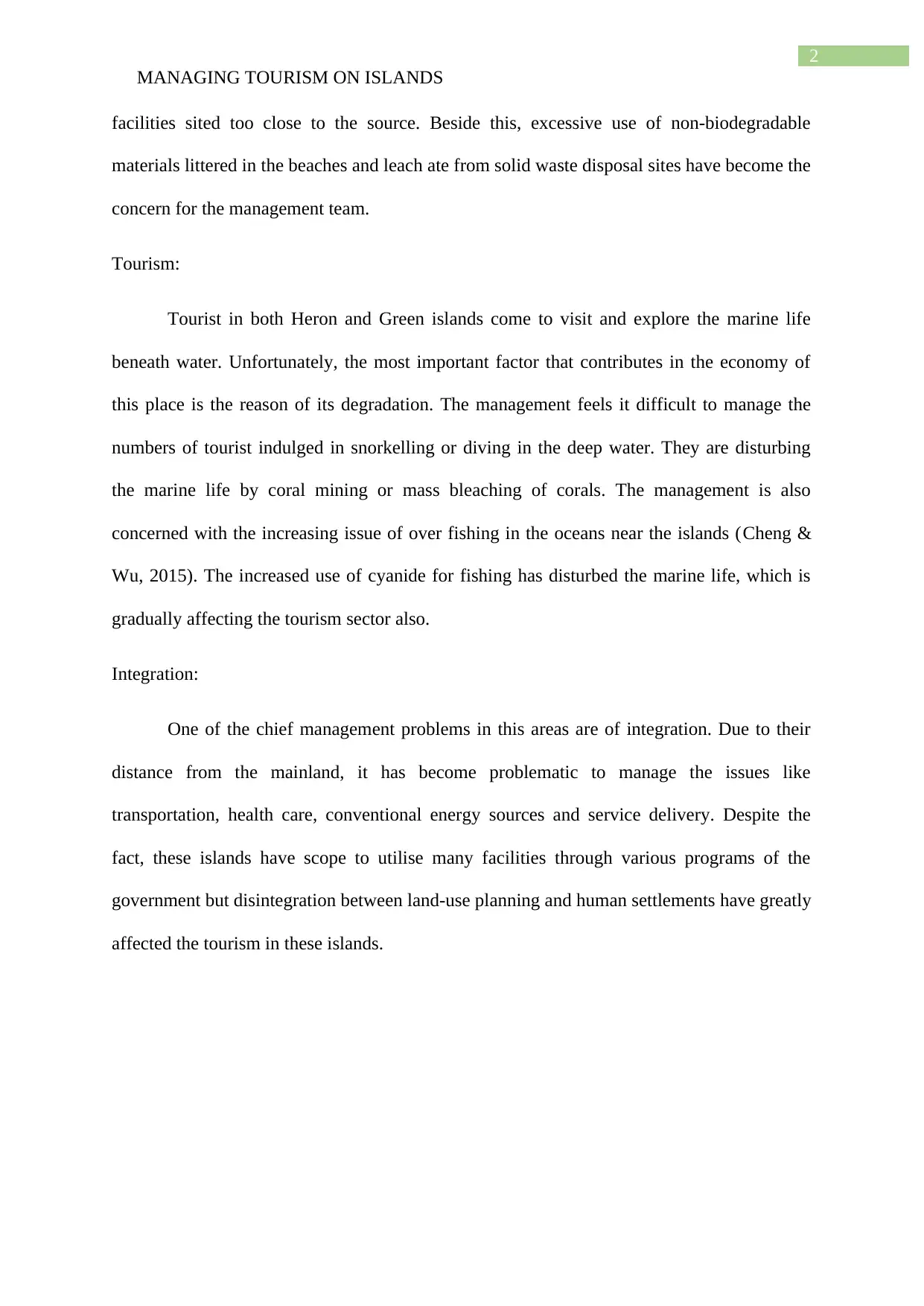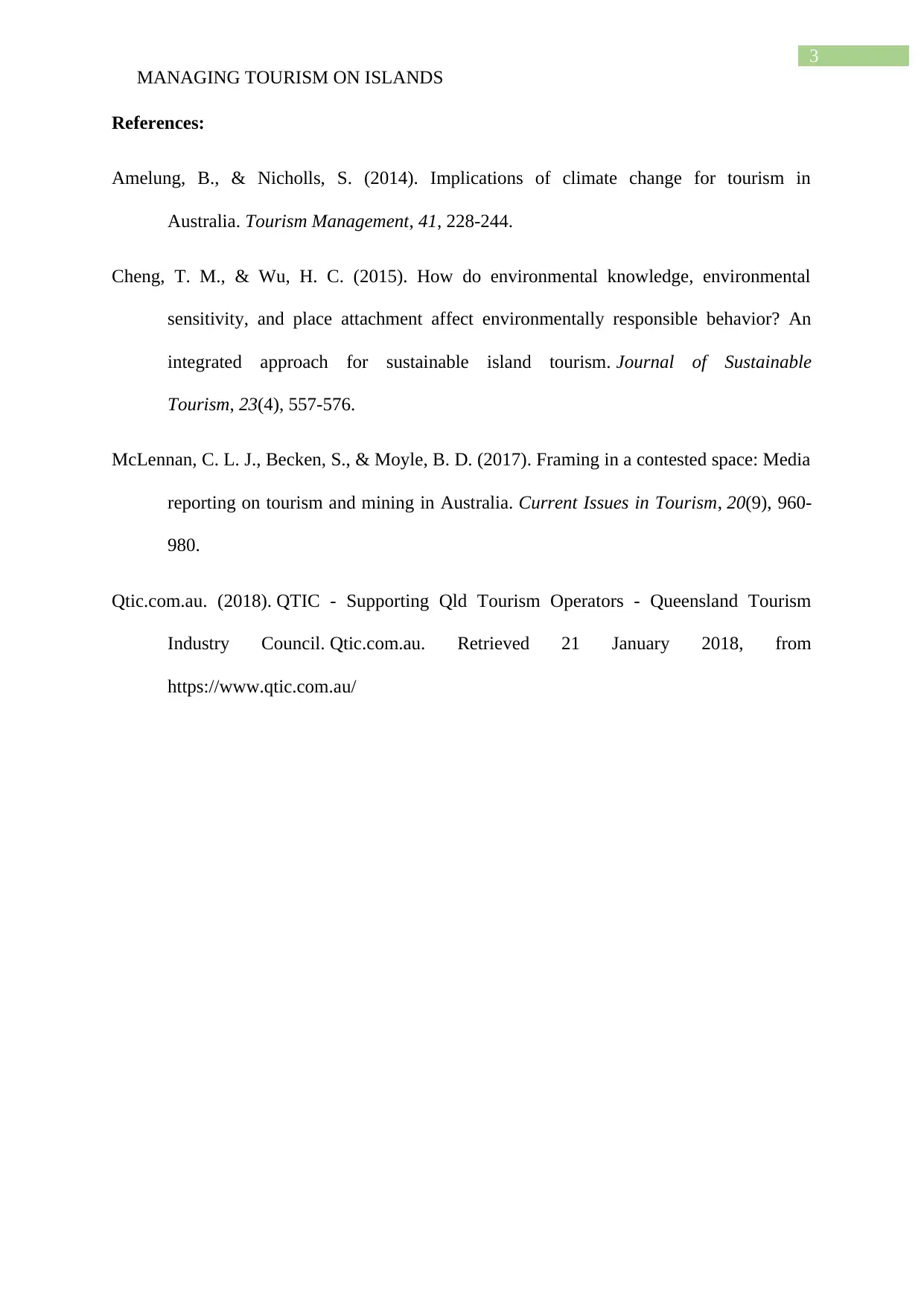Report on the Management Challenges of Island Tourism
VerifiedAdded on 2020/05/16
|4
|750
|183
Report
AI Summary
This report examines the multifaceted challenges of managing tourism on small islands, focusing on geographic, demographic, and economic factors. It highlights problems such as water scarcity due to limited freshwater resources and the impact of tourism on marine environments, including pollution from sanitation facilities and non-biodegradable waste. The report also addresses the degradation of coral reefs due to tourist activities like diving and snorkeling, as well as overfishing. Integration issues, stemming from the islands' distance from the mainland, are discussed in terms of transportation, healthcare, and service delivery. The report uses examples from Heron and Green Islands in Australia to illustrate these challenges and references relevant literature on sustainable tourism and environmental management.
1 out of 4







![[object Object]](/_next/static/media/star-bottom.7253800d.svg)